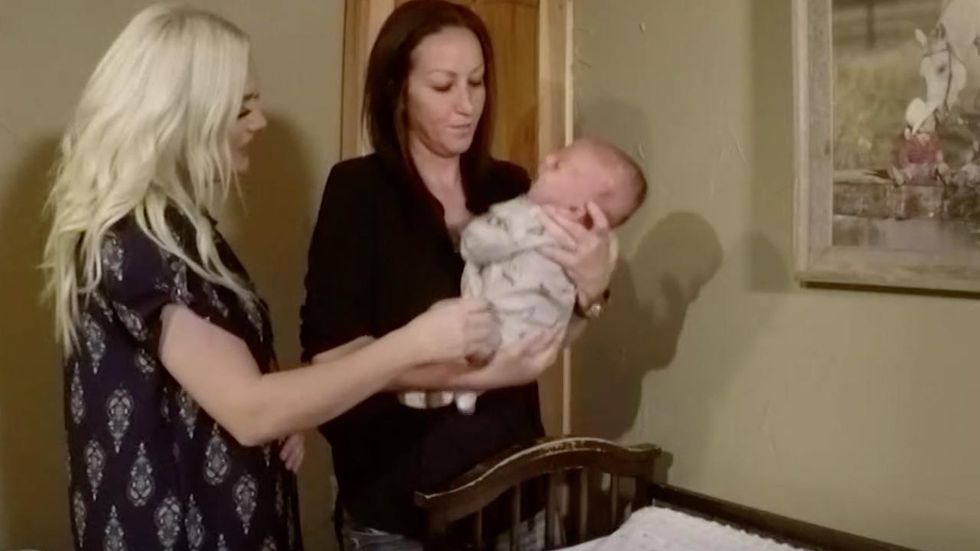
A same-sex Texas couple Ashleigh Coulter (left) and Bliss Coutler each carried their 5-month-old son Stetson, a case that doctors believe to be the first in medical history, according to reports. (Image source: Video screenshot)

A lesbian couple became mothers to a baby boy that each of the women carried, a case that doctors believe to be the first in medical history, WFAA-TV reported.
The North Texas women, Ashleigh Coulter, 28, and Bliss Coulter, 36, married in 2015 and they wanted to have a baby. They knew their wish to become parents would require a sperm donor and some help from fertility doctors.
They met with fertility specialists Dr. Kathy Doody and her husband Dr. Kevin Doody of the C.A.R.E. Fertility Clinic in Bedford, Texas, who introduced them to a procedure called Effortless Reciprocal In Vitro Fertilization or Effortless Reciprocal IVF.
The procedure worked and the Coulter's are now the parents of 5-month-old Stetson.
Ashleigh and Bliss started researching to find a way for both of them to participate in the bringing a child into the world.
In many cases, if a lesbian couple desires to have a child, "one of them typically births the child and they use the sperm donor," Ashleigh told WFAA.
Then, after the baby is born the other mom has to adopt the child.
They saw a news clip about the fertility clinic and scheduled an appointment.
Kathy Doody told them about the procedure and that if it worked, it would be “the first time where both of the mothers physically carried the baby.”
Effortless IVF begins the same way as traditional IVF.
"Bliss went through the stimulation of her ovaries and the egg harvest," Kathy Doody said.
But instead of placing the eggs and sperm into an incubator, they were placed inside the INVOcell device immediately after the eggs were retrieved. Then, the device was placed into Bliss' body for five days to start developing the embryo.
"It turns out, not surprisingly, that the woman's own body is a very good incubator," Kathy Doody said. "We have livers, kidneys, and lungs so we're able to provide those same services to the embryo more naturally."
Ashleigh was given hormones to prepare her body for the next step — transferring the embryos to her body — and she became pregnant on the first try.
"She got to carry him for five days and was a big part of the fertilization, and then I carried him for nine months," Ashleigh Coulter said. "So that made it really special for the both of us — that we were both involved. She got to be a part of it, and I got to be a part of it."
The process for Reciprocal Effortless IVF costs about $8,000 whereas traditional IVF can run about $15,000 to $20,000, according to the report.
The couple has two frozen embryos that they hope to use to have another child in the future.